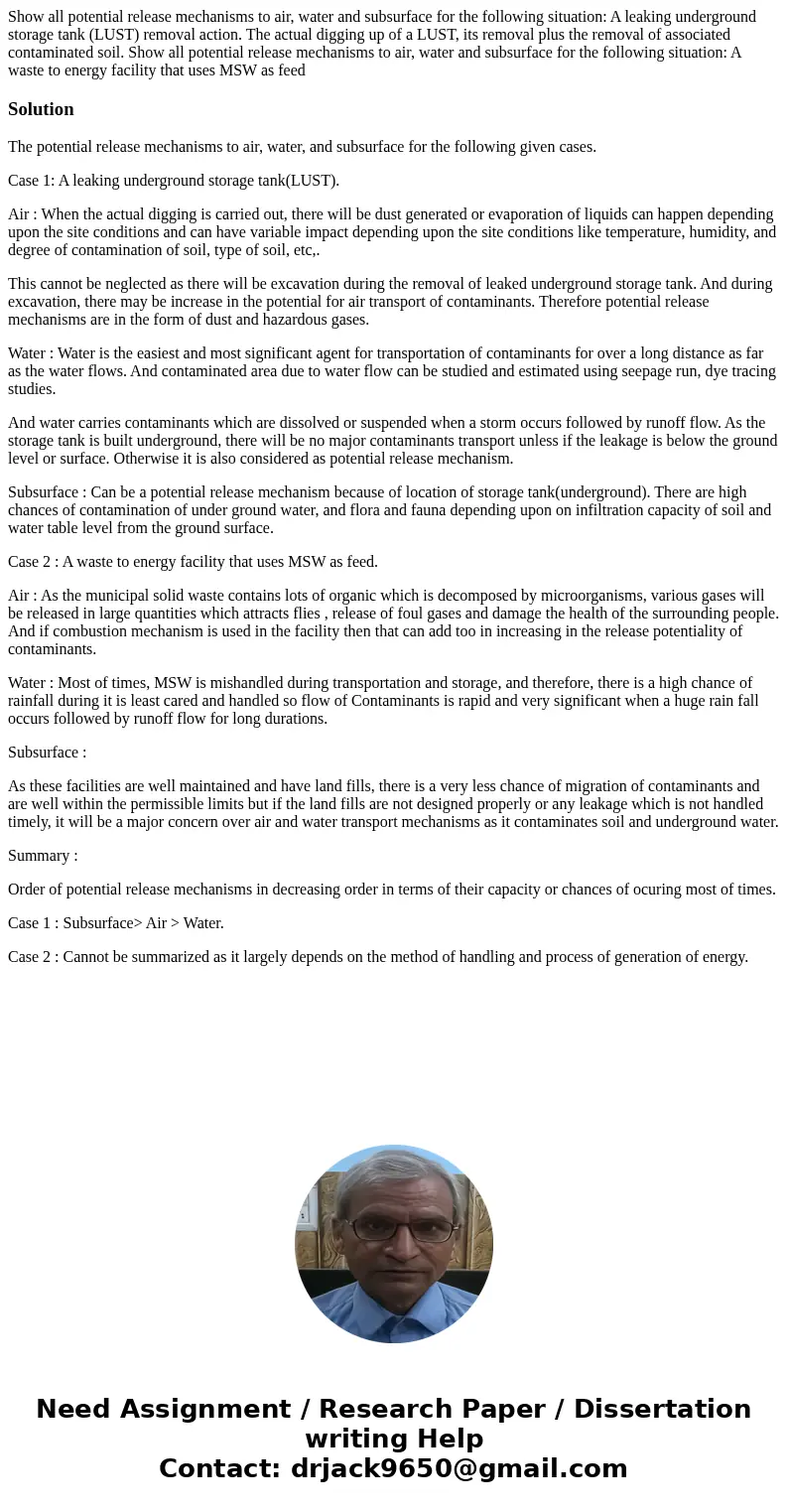Show all potential release mechanisms to air water and subsu
Solution
The potential release mechanisms to air, water, and subsurface for the following given cases.
Case 1: A leaking underground storage tank(LUST).
Air : When the actual digging is carried out, there will be dust generated or evaporation of liquids can happen depending upon the site conditions and can have variable impact depending upon the site conditions like temperature, humidity, and degree of contamination of soil, type of soil, etc,.
This cannot be neglected as there will be excavation during the removal of leaked underground storage tank. And during excavation, there may be increase in the potential for air transport of contaminants. Therefore potential release mechanisms are in the form of dust and hazardous gases.
Water : Water is the easiest and most significant agent for transportation of contaminants for over a long distance as far as the water flows. And contaminated area due to water flow can be studied and estimated using seepage run, dye tracing studies.
And water carries contaminants which are dissolved or suspended when a storm occurs followed by runoff flow. As the storage tank is built underground, there will be no major contaminants transport unless if the leakage is below the ground level or surface. Otherwise it is also considered as potential release mechanism.
Subsurface : Can be a potential release mechanism because of location of storage tank(underground). There are high chances of contamination of under ground water, and flora and fauna depending upon on infiltration capacity of soil and water table level from the ground surface.
Case 2 : A waste to energy facility that uses MSW as feed.
Air : As the municipal solid waste contains lots of organic which is decomposed by microorganisms, various gases will be released in large quantities which attracts flies , release of foul gases and damage the health of the surrounding people. And if combustion mechanism is used in the facility then that can add too in increasing in the release potentiality of contaminants.
Water : Most of times, MSW is mishandled during transportation and storage, and therefore, there is a high chance of rainfall during it is least cared and handled so flow of Contaminants is rapid and very significant when a huge rain fall occurs followed by runoff flow for long durations.
Subsurface :
As these facilities are well maintained and have land fills, there is a very less chance of migration of contaminants and are well within the permissible limits but if the land fills are not designed properly or any leakage which is not handled timely, it will be a major concern over air and water transport mechanisms as it contaminates soil and underground water.
Summary :
Order of potential release mechanisms in decreasing order in terms of their capacity or chances of ocuring most of times.
Case 1 : Subsurface> Air > Water.
Case 2 : Cannot be summarized as it largely depends on the method of handling and process of generation of energy.

 Homework Sourse
Homework Sourse